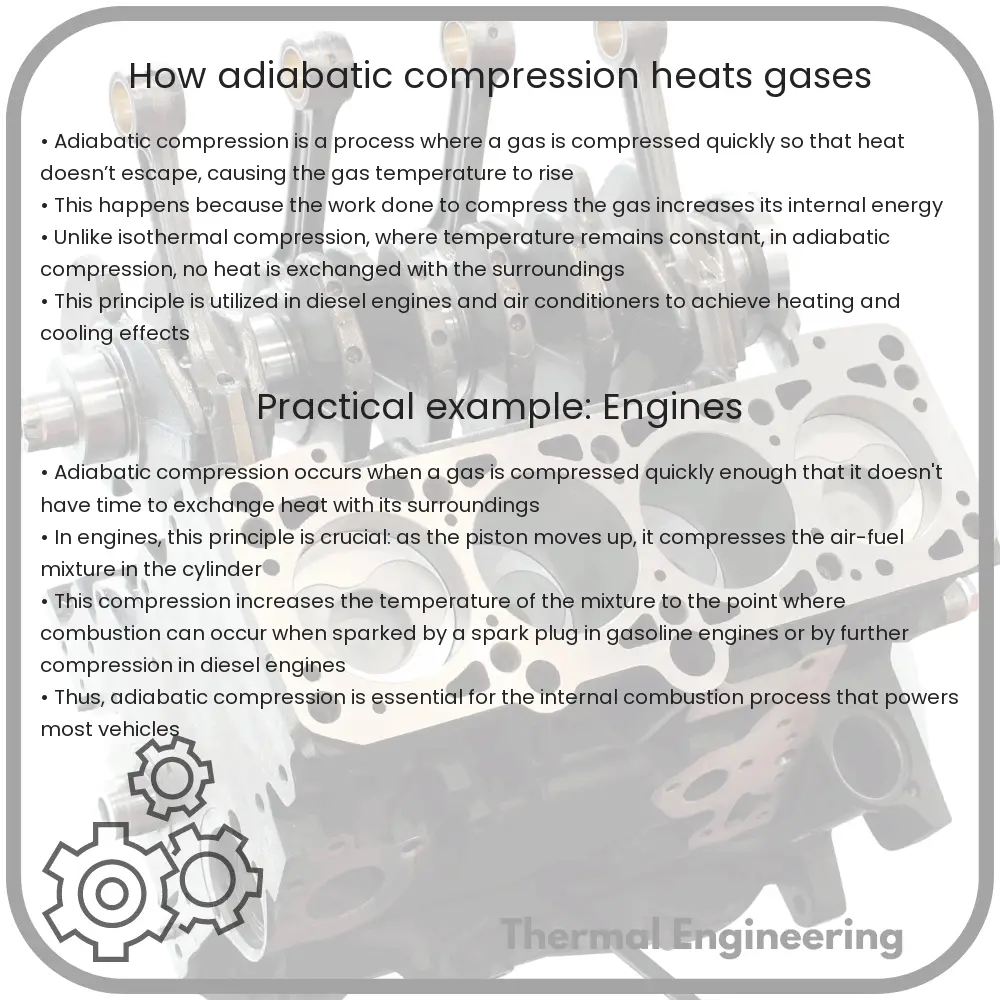Learn how adiabatic compression increases gas temperature through pressure without heat exchange, a vital concept in thermodynamics and engineering.

Understanding Adiabatic Compression in Gases
Adiabatic compression is a fundamental process in thermodynamics where the pressure of a gas is increased by compressing it, leading to a rise in temperature but without any heat transfer to or from the environment. This concept is crucial in various engineering applications, such as refrigeration cycles and internal combustion engines. To comprehend how adiabatic compression heats gases, it’s essential to first understand a few core principles of thermodynamics.
What is Adiabatic Compression?
Adiabatic compression occurs when a gas is compressed in a system that does not exchange heat with its surroundings, meaning the process is insulated against any heat transfer. As a result, all the work done on the gas is used to increase the internal energy of the gas, which raises its temperature.
The Physics Behind Adiabatic Compression
The behavior of gases undergoing adiabatic processes can be described using the ideal gas law and the concept of specific heat capacities at constant pressure (Cp) and constant volume (Cv).
- First Law of Thermodynamics: This law states that the change in the internal energy of a system is equal to the heat added to the system minus the work done by the system. For adiabatic processes, no heat is added or removed (Q = 0), so the change in internal energy (ΔU) is simply the work done on the gas.
- Poisson’s Equations: These equations describe the relationship between the pressure, volume, and temperature of an ideal gas during an adiabatic process. The key equations are:
\( PV^k = \text{constant} \) and \( T V^{k-1} = \text{constant} \)
where \( k = \frac{C_p}{C_v} \) is the specific heat ratio, a dimensionless number specific to each gas.
When you compress a gas adiabatically, you decrease its volume (V) while increasing its pressure (P). According to Poisson’s law, because the process is adiabatic, the product of pressure and volume raised to the power \( k \) remains constant. As the volume decreases, the pressure must increase proportionately such that \( PV^k \) is invariant, leading to an increase in temperature.
Real-World Applications
- Internal Combustion Engines: In these engines, a mixture of air and fuel is compressed adiabatically in a piston chamber, greatly increasing its temperature before ignition, improving the engine’s efficiency and power output.
- Jet Engines: Air is adiabatically compressed in the compressor section of a jet engine, raising its temperature, before it enters the combustion chamber where fuel is added, leading to more efficient fuel combustion.
- Refrigeration Cycles: Refrigeration and air conditioning systems utilize adiabatic compression to increase the temperature and pressure of a refrigerant, which is then cooled and expanded for cooling purposes.
Conclusion
Adiabatic compression is a key phenomenon used across various engineering disciplines. By compressing gases without allowing heat exchange with the environment, significant temperature rises can be achieved. This principle is essential in designing and operating many machines that form the backbone of modern industry and technology, making it a cornerstone of engineering thermodynamics.